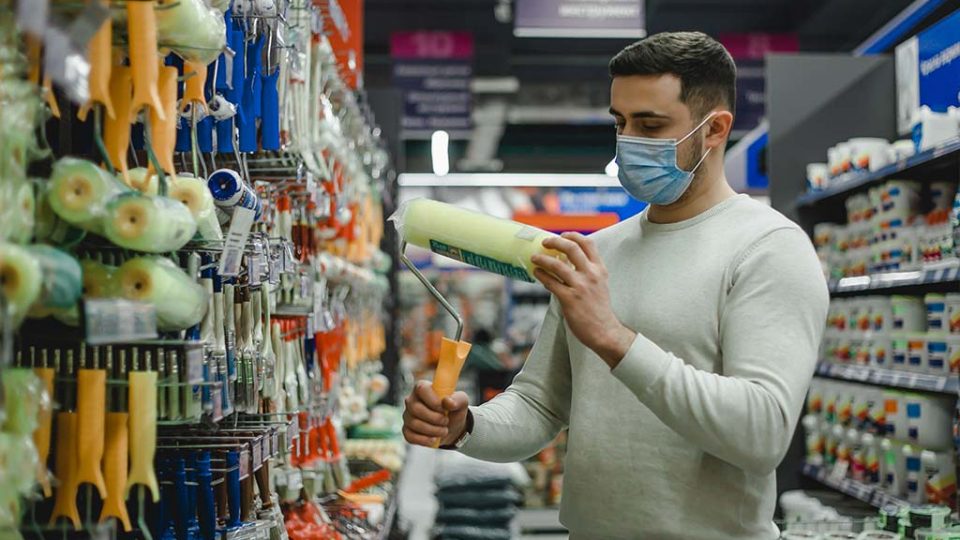It’s no surprise that COVID has impacted all of us. We’ve been stuck in our homes, had celebrations over Zoom, baked sourdough bread and binged A LOT of shows.
Given that our day-to-day lives have been significantly impacted during this time, Disney Ad Sales set out to understand if people’s spending habits have also shifted during the COVID-19 pandemic and what the implications are for advertisers as they try to reach consumers in a post-pandemic world.
Shopping During COVID Shifted from Experiential to Tangible
Nearly 70% of people agree that they’ve bought more online during the pandemic. They’ve been taking advantage of online deliveries and getting takeout at restaurants more often.
Not only has the method of shopping changed, but the actual purchases have shifted too. What we mean by that is: during the pandemic purchases shifted from more experiential purchases (i.e. travel, concerts, etc.) to more tangible purchases (i.e. housewares, technology, etc.).
Experiential vs. Tangible Purchases Pre and During COVID

COVID Burnout is Real and It Impacts Spending
The pandemic has weighed heavily on us. People agree that they feel burned out (66%) and are worried about the future (66%). More specifically, people are concerned about their health, the future of the economy and their personal finances.
As a result of the COVID-19 pandemic, people are worried/concerned about the following:

71% of consumers also have a greater sense of urgency to save money as a result of these financial and larger societal worries.
Consumers are squirreling away savings to protect themselves from future downturns
That sense of urgency is further translating into actual savings. We found that nearly 1-in-3 have increased their financial assets during the COVID-19 pandemic. When looking at people with incomes of $100K+ we see even higher numbers for increased savings during this time.

Consumers’ savings during COVID are most often being placed in a “Forever Savings” fund (i.e. retirement account), a travel fund or a home fund.
Post-COVID, Consumers Plan to Save and Spend Intentionally
We also wanted to understand if these COVID-spending behaviors will be reflective of post-pandemic spending and if they are here to stay
We found that people want to be more intentional with their future spending (68%) coming out of the pandemic. They’re also being more conscientious about their day-to-day spending by looking for discounts and doing more research before purchasing products.
Post-COVID, Consumers Also Plan to “Treat Themselves”
We all deserve a little TLC after this past year and a half! And people want to “treat themselves” — or at least feel a little bit of a return to normalcy with their purchases.
During the pandemic, people treated themselves by purchasing items that improve their at-home experience. They increased their spending on streaming TV services (24%), candy (22%), comfy clothing (19%), alcohol (15%) and even ‘gifts for myself’ (13%).
Coming out of the pandemic, 51% agree that they want to treat themselves more. However, the purchases will become more experiential as people anticipate spending on travel, live entertainment and movie tickets.
Advertising Expectations Have Shifted
With shifting shopping behaviors and mentalities also comes shifting expectations of advertisers. First and foremost, people value honesty and authenticity in advertising during this time. Similar to what Hulu Insights shared in previous studies, people want to see how brands are prioritizing their employees (77%), helping with the current situation (73%), and informing people of their Coronavirus plans (70%) and safety measures (67%).
Aligned to having a saving mentality, consumers are also looking for advertisers to provide discounts and deals during this time (80%).
To best deliver to consumers, advertisers should focus on creating honest and authentic advertising, showcasing how they’re making adjustments during the pandemic, and offering deals and discounts. We understand that not all companies may be able to do this, but when possible, companies should try to promote a “we’re all in this together” mentality as it is appreciated by consumers.
So, What Did We Learn?
While at first, this two-sided approach to spending–intentional saving and a “treat yourself” mentality–may seem contradictory, when digging a little deeper it feels both relatable and understandable.
Now more than ever, it’s important for advertisers to maintain a connection with consumers. As we continue navigating through this time and adjust to a “new normal,” advertisers should continue showcasing honesty and authenticity in their messaging as well as highlight promotional offerings.
Coming out of the pandemic we want to feel like we’re making smart spending and saving decisions —as a protective mechanism —while still rewarding ourselves for getting through this tough time.
Source: ePoll COVID Share of Wallet Custom Study, March 2021
